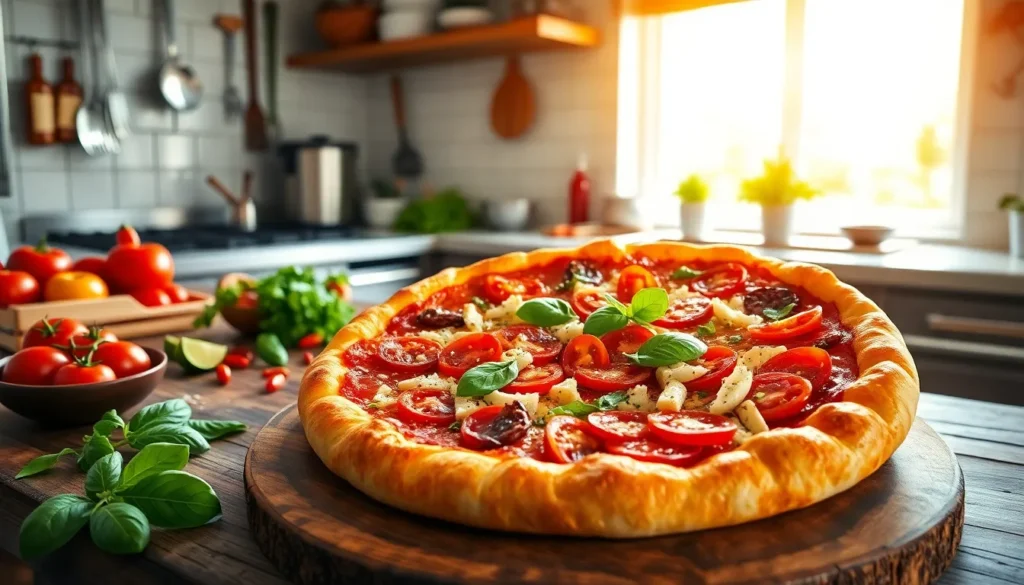Imagine biting into a slice of Dyeowokopizz, where flavors dance on your palate and aromas whisk you away to far-off lands. But wait. What exactly is Dyeowokopizz? You won’t find it on your typical pizzeria menu, and that’s what makes it so enticing. In this culinary journey, we’ll uncover its mysterious origins, examine its cultural significance, and explore variations that could make even your grandma’s recipe blush. So grab a slice (or two) and let’s dig into the delicious world of Dyeowokopizz.
What Type of Dyeowokopizz

Origins and Cultural Significance
Dyeowokopizz isn’t just another food trend: it holds deep roots in various cultures. This intriguing dish is often celebrated in festivals and family gatherings. It’s not merely about the food, it’s about togetherness, shared stories, and the joy of creating something delicious. Imagine cooking with loved ones, laughter filling the air, as the hearty aroma of Dyeowokopizz wafts through the home.
Ingredients that Make Dyeowokopizz Unique
At the heart of Dyeowokopizz is a medley of ingredients that varies from celebration to celebration. Typically, a robust dough lays the foundation, followed by a vibrant blend of spices. These spices bring a kick, enhancing the overall flavor profile. Adding to its uniqueness, fresh vegetables and hearty meats often contribute to the visual appeal. The beauty lies not only in taste but in how each ingredient tells a story, woven together in every bite.
Different Styles of Dyeowokopizz
Traditional vs. Modern Variations
While traditional Dyeowokopizz boasts time-honored recipes passed through generations, modern variations flirt with creative flair. Chefs experiment with unconventional toppings and innovative flour types, while keeping the essence intact. Picture a traditional Dyeowokopizz topped with heirloom tomatoes, paired with a novel twist of truffle oil, an enticing clash of the past and present.
Regional Differences in Preparation
Travel around the world, and you’ll find each region proudly offering their take on Dyeowokopizz. From crispy edges in the north to softer bases in the south, the preparation methods showcase local tastes and ingredients. Some areas favor robust seasonings, while others prefer a subtler approach, reflecting the producer’s connection to the land.
Popular Cheese Options for Dyeowokopizz
Toppings That Elevate Dyeowokopizz
Cheese plays a pivotal role in Dyeowokopizz harmonizing diverse flavors without overshadowing them. Classic choices include mozzarella and ricotta, but ventures into sharp cheddar or tangy goat cheese open new avenues of taste. Dip a toe into exotic cheeses like blue cheese or feta, and watch how they transform each slice into a flavor explosion. Accompany these cheeses with toppings like artisanal cured meats or seasonal vegetables to elevate the experience even further.
Healthier Alternatives and Special Diets
Sourcing Quality Ingredients for Dyeowokopizz
As the culinary world embraces more health-conscious decisions, Dyeowokopizz has also evolved. Opting for whole grain flour for the dough or organic vegetables for toppings can boost nutritional value significantly. With the rise of gluten-free and vegan options, there’s no need to miss out. Plenty of recipes cater to those dietary restrictions, ensuring that everyone can delight in the joy of Dyeowokopizz. Each ingredient should be carefully sourced, illustrating the cook’s dedication to quality.
Cooking Methods and Techniques
Expert Tips for Perfecting Your Dyeowokopizz
To truly master Dyeowokopizz, attention to detail is key. Start with the dough: kneading it just the right amount can make all the difference. Some prefer cooking it in a traditional wood-fired oven, while others swear by the convenience of a conventional oven. Experimenting with temperature will influence the final product’s texture and flavor. Remember, patience is a cook’s best ally: let the Dyeowokopizz breath before cutting into it, allowing those flavors to fully develop.

